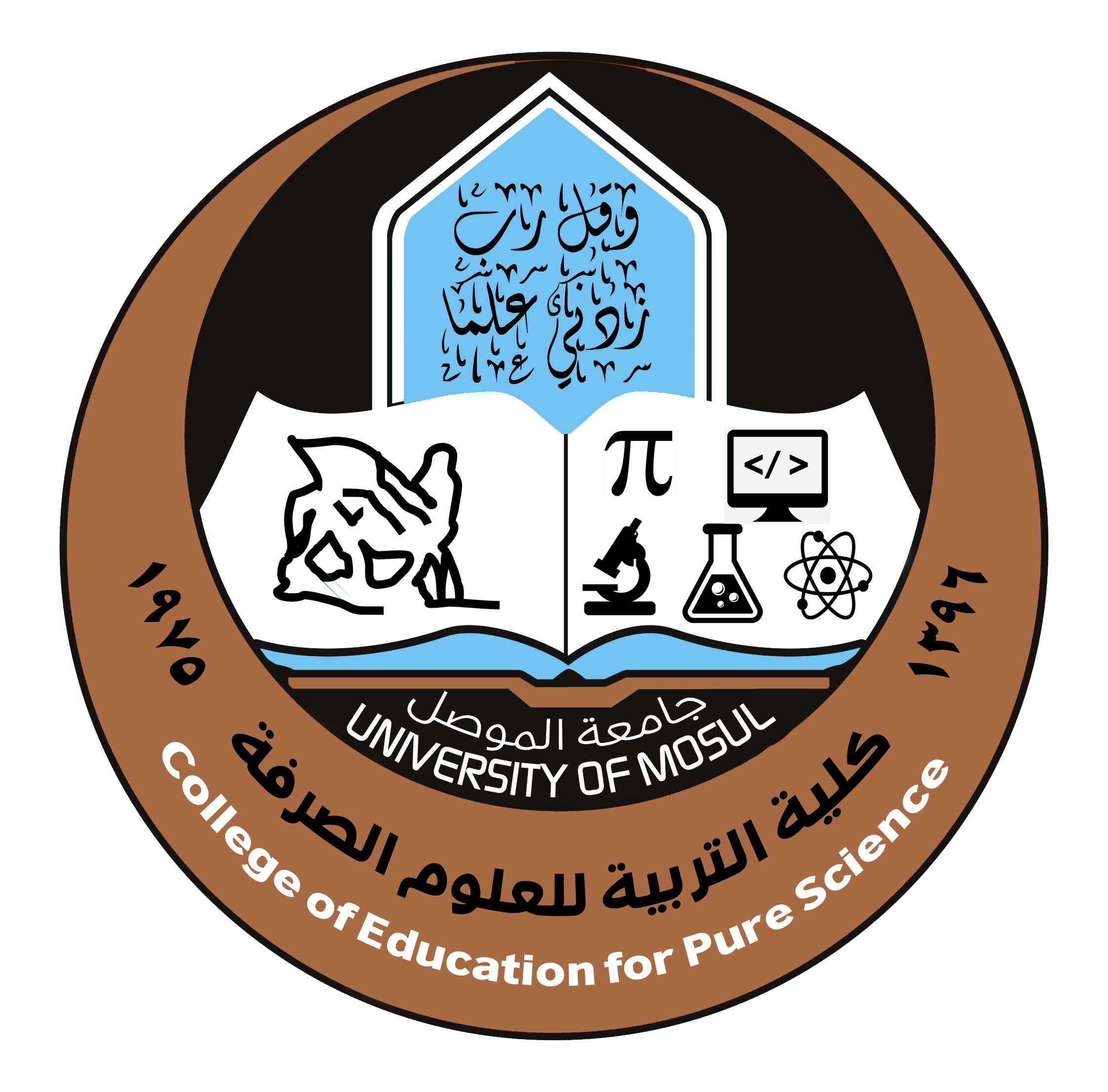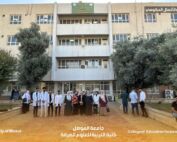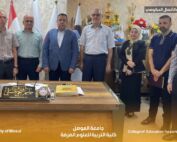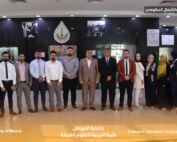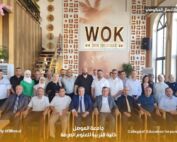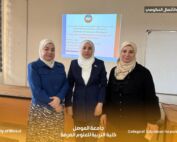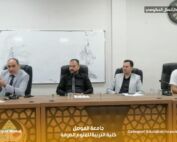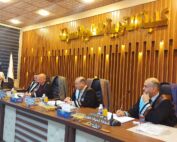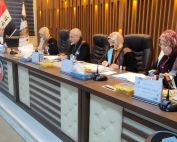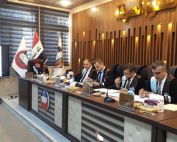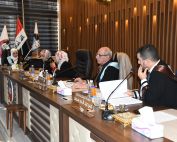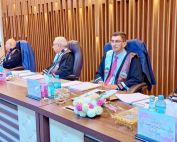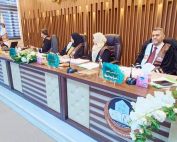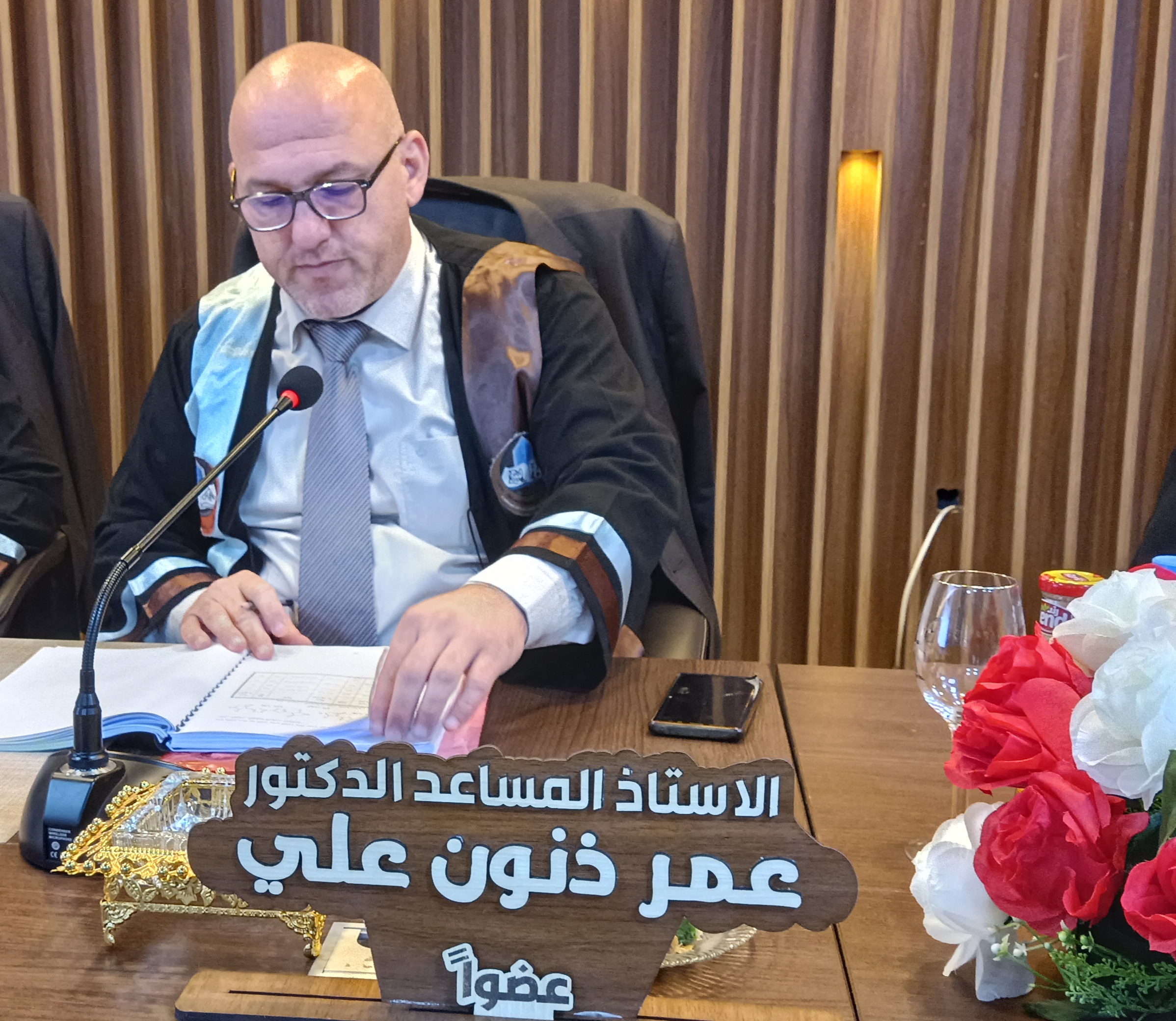19 June، 2022
Master Thesis Viva-Physics Department
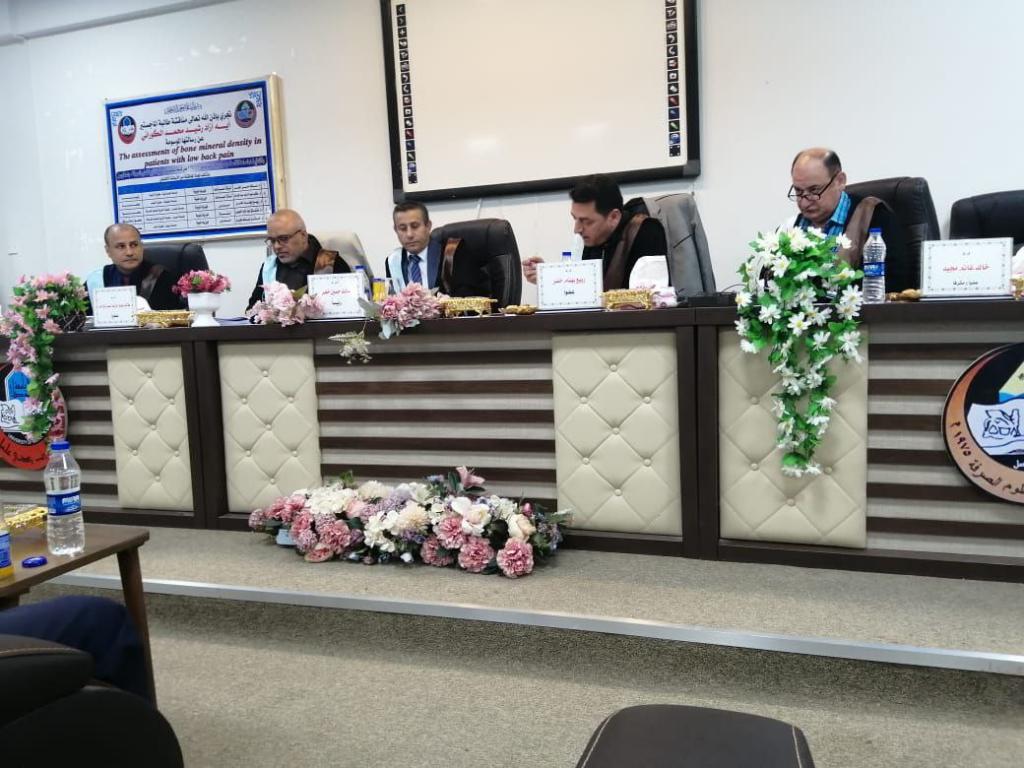
Master Thesis Viva in the College of Education for Pure Science entitled “The assessments of bone mineral density in patients with low back pain”The College of Education for Pure Science, University of Mosul, has done the Master Thesis Viva entitled “The assessments of bone mineral density in patients with low back pain”,On Sunday, June 19, 2022, the College staff including the respected Dean of the College, Assistant Professor Dr. Qais Ismail Ibrahim, the Honorable Scientific Associate and Administrative Associate, the Honorable Head of the Department of Physics, and a number of the college’s teachers were attended the viva. In this study, presented by the M. Sc. student Aya Azad Rasheed Mohammed Al-Gorani in the Department of Physics, the quantitative ultrasound (QUS) technique was used to assess the bone quality of right foot calcaneus for patients with low back pain (LBP). The speed of sound (SOS), broadband ultrasound attenuation (BUA), and bone quality index (BQI) were measured. Also, the dual-energy x-ray absorptiometry (DXA) technique was used in this study to measure tissue thickness, fracture risk factor, and abdominal fat percentage. This cross-section study was conducted in a medical complex (Adam2) in Nineveh Governorate / Mosul-Iraq and the number of participants in the study was 123 of both sexes (18 males and 105 females), their ages ranged from (21-80) years. Consider QUS technique is safe and free from ionizing radiation, a small-size technique that can be used in the diagnosis osteoporosis of the foot bone (calcaneus). QUS parameters, which include both SOS and BUA, reflect the mechanical properties of the bone. The SOS is possible to distinguish between cortical bone and trabecular bone. BUA represents a measure of the loss of sound energy as it passes through the bone, the higher the BUA value, the greater bone density. The body mass index (BMI) measurement was (mean±SD=32.18±6.43 kg/m2). The measurements were SOS, BUA, and BQI for the study participants (mean±SD= 1495.43±18.780m/sec, 93.15±21.299 dB/MHZ, 69.90±20.634). It was found SOS measurements have no statistical significance, P-value>0.05. T-score and Z-score measurements (mean±SD= -1.85±1.11, -1.10±1.56). These measurements have no statistical significance, P-value>0.05. With the use of the DXA technique, the measurements of the fracture risk factor (mean±SD=1.622± 1.90) were found, and a linear relationship between the fracture risk factor and age that has no statistical significance. The measurements of the abdominal fat percentage (mean±SD=34.89±7.20) does not have a statistical significance. The tissue thickness measurements (mean±SD=25.33± 3.377) were found to have not statistical significance, expect for the age group 71-80 years, have a statistically significant. LBP is the most common disease that begins at the age of 30 or 40 years and increases with age. The lumbar herniated disc is one of the causes of LBP. In the measurements of LBP, it was found that the highest percentage was recorded in the age group 51-60 years. The pain measurements show that participants who have more than 5 children suffer from LBP and lumbar disc herniate. LBP measurements the thickness of the tissue decreases when a lumbar disc herniate occurs. In this study, linear relationship between T-score and calcaneal SOS, BUA, BQI, is observed in the estimated value of the correlation coefficient for this relationship (R) (0.953, 0.885, 1.0), square of the correlation coefficient (Rsq) (0.909,0.784,0.999) and that these relationships have statistical significance P-value<0.0001. Also, a linear relationship between Z-score and calcaneal SOS, BUA, BQI (P-value<0.0001,P-value=0.0001) is found with the values of the correlation coefficient and square of the correlation coefficient (R= 0.956 ,0.840 ,0.916 , Rsq= 0.914, 0.706, 0.838). Parameters of the relationship between calcaneal SOS, BUA, BQI and BMI were (P-value= 0.6, 0.8, 0.8) (R= 0.037, 0.020, -0.016) (Rsq= 0.001, 0.0004, 0.0004). The values of the parameters, the relationship between calcaneal SOS, BUA, BQI and tissue thickness was (P-value= 0.5, 0.8, 0.7) (R= 0.056, 0.019, -0.029) (Rsq= 0.003, 0.0004, 0.0008). The parameters of the relationship between calcaneal SOS, BUA, BQI and abdominal fat % were (P-value= 0.05, 0.1, 0.05) (R= 0.197, 150, -0.181) (Rsq= 0.032, 0.023, 0.033). The viva committee was chaired by Assist. Prof. Dr. Malik Hussein Kheder/ University of Hamdaniya/ College of Education and the membership of Assist. Prof. Dr. Talib Abdulridha Abdulwahid/ University of Kufa/ College of Science, Lecturer. Dr. Rabee Behnam Kheder/ University of Mosul/ College of Education for Pure Sciences and under the supervision and membership of both Prof. Dr. Mushtaq Abed Dawood Al-Jubbori / University of Mosul/ College of Education for Pure Sciences and Lecturer. Dr. Khalid Ghanim Majeed/ University of Nineveh/ College of Medicine.
